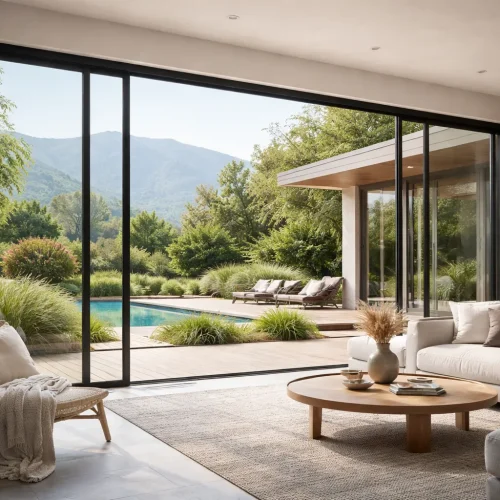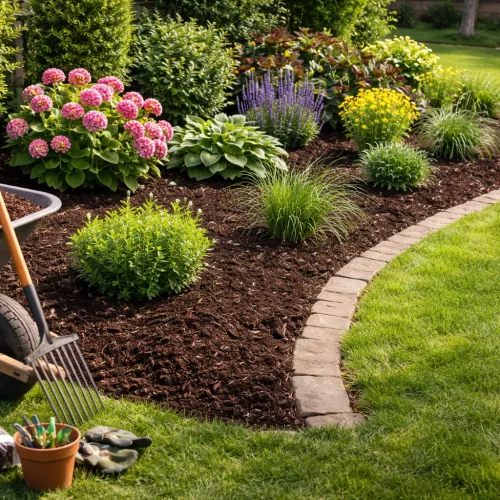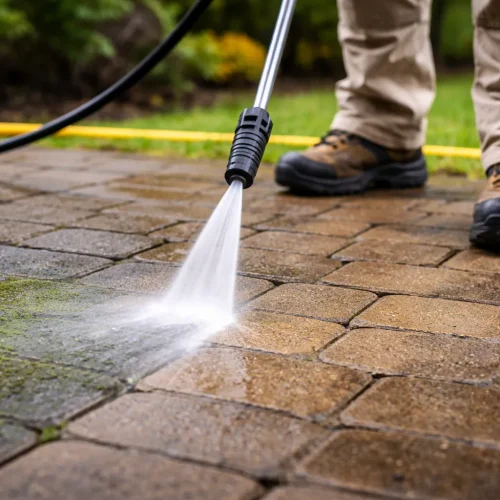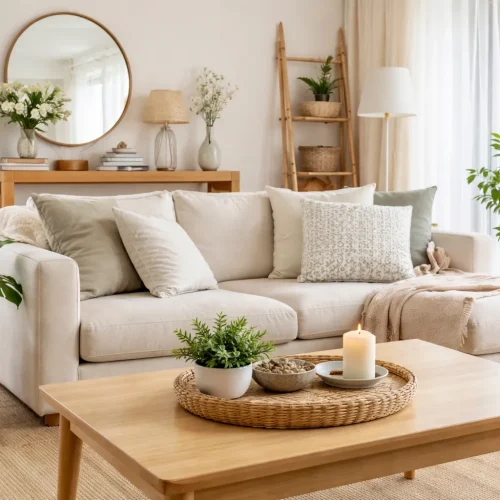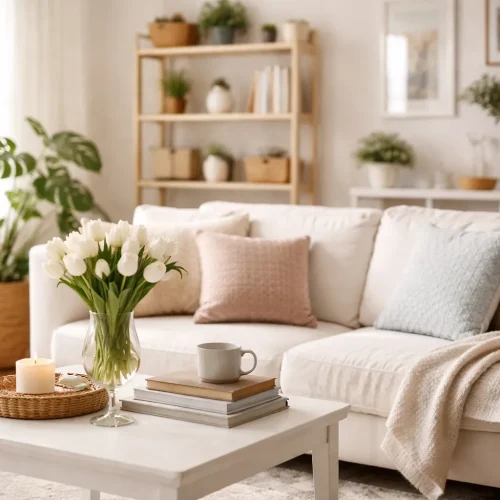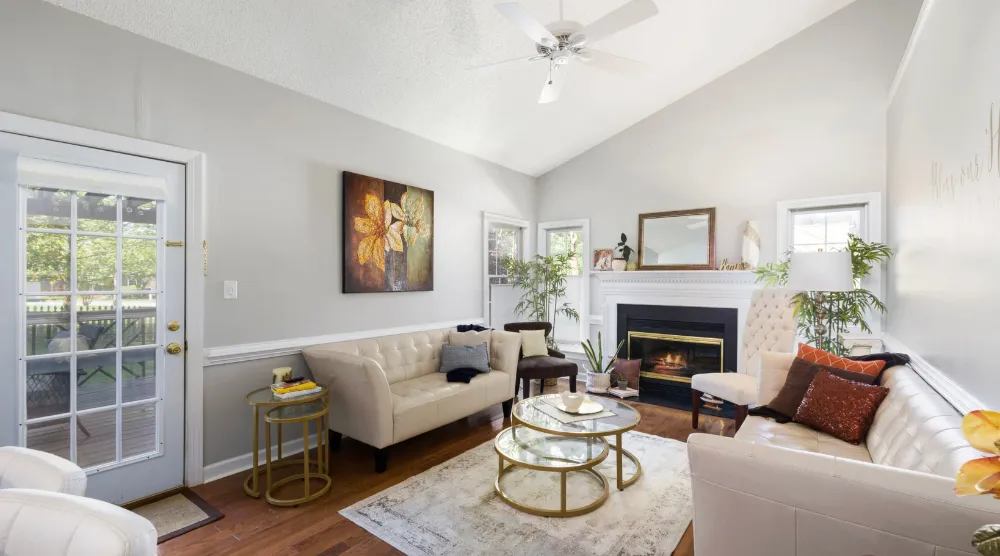
Living in a shoebox apartment? You’re not alone. The truth is, today’s housing crunch has millions of us squeezed into spaces that feel more like storage units than homes. But here’s what most people don’t realize: home interior design isn’t just about aesthetics; it can be the key to unlocking hidden potential in your space. Smart home redesign can work absolute magic on even the tiniest places, turning cramped quarters into sleek, functional homes that feel double their actual size.
You don’t need to move or knock down walls to create breathing room. Modern tech solutions can maximize space in ways that would’ve seemed impossible just five years ago. Whether you’re stuck in a studio or trying to make a compact family home work for everyone, the right redesign strategies will completely change how you experience your living space.
Core Strategies That Actually Work for Tight Spaces
Look, I’ve seen plenty of “space-saving” advice that sounds great on Pinterest but falls flat in real life. What actually works? Understanding how innovative technology can amplify what you’ve already got.
Here’s something interesting: integrating access control systems and physical asset management systems —like smart lockers—can cut operational costs significantly by streamlining processes, improving efficiency, and reducing the need for manual oversight. That same principle applies brilliantly to home environments where every single square foot needs to earn its keep.
Furniture That Pulls Double (or Triple) Duty
Smart home redesign starts with pieces that refuse to be just one thing. Gone are the days of furniture that just sits there looking pretty. Today’s multifunctional pieces pack a serious punch—we’re talking coffee tables with built-in mini-fridges, beds that hide enough storage to rival a walk-in closet, and ottomans that charge your devices.
When you’re ready to take these tech upgrades seriously, you might discover that some structural tweaks could amplify your results—thinking about removing walls, carving out storage niches, or installing heavy automated systems? That’s when you’ll want residential concrete contractors to ensure everything stays rock-solid and safe during your transformation.
The really smart stuff? Beds with integrated drawers that eliminate your need for a bulky dresser. Some even include sleep sensors and adjustable firmness controlled through your phone. This isn’t just about small space living—it’s about making every piece of furniture justify its footprint through multiple functions.
Going Vertical (Because Up is Where the Magic Happens)
Wall storage isn’t new. But smart wall storage? That’s a game-changer. These systems connect to your home network and light up when you walk by. Some even track what you’ve stored and send you notifications when you’re running low on supplies.
The real breakthrough? Ceiling-mounted platforms that motorize down to your level with a remote. Suddenly, that dead space above your head becomes prime real estate for seasonal stuff. It’s vertical thinking that actually expands your usable storage without eating up floor space.
Lighting Tricks That Fool Your Brain
Here’s where things get fascinating. Strategic automated lighting literally tricks your perception into seeing bigger spaces. LED strips tucked under cabinets and along baseboards eliminate those dark corners that make rooms feel cramped. Smart mirrors with built-in lighting do double duty—they light up the space and bounce light around to create depth.
Color-changing bulbs adjust automatically throughout your day. Cooler temperatures during daylight hours make everything feel more open. Warmer evening tones create that cozy atmosphere without actually shrinking your physical space.
Next-Level Organization Through Smart Tech
Traditional organization methods feel prehistoric once you’ve experienced automated systems that maintain order without your constant attention. These aren’t just cool gadgets—they’re solutions that address real home organization challenges while supporting how we actually live today.
Storage That Thinks for Itself
Connected storage communicates with your smartphone to track what’s inside and how you use everything. Smart bins automatically reorder household essentials when supplies run low. They learn your consumption patterns and adjust their reordering schedules accordingly. No more running out of toilet paper or buying your fifth bottle of ketchup because you forgot what was in the pantry.
RFID-tagged containers let you find specific items instantly through app searches. This becomes incredibly valuable in small space living situations where items might be tucked away in multiple locations or hard-to-reach spots.
Voice Control That Actually Makes Sense
Voice assistants paired with smart storage create hands-free inventory management that actually works. You can speak commands to locate items, build shopping lists, or schedule organization tasks. This proves especially helpful in busy households where multiple people need access to shared storage information.
Smart speakers positioned throughout compact homes deliver location-specific reminders and guide family members to stored items without manual searching. It’s like having a personal assistant who never forgets where you put anything.
Apps That Centralize Your Space Management
Mobile applications unite control over multiple innovative organizational systems. Monitor storage usage, track frequently accessed items, and receive optimization suggestions based on your actual usage data. Some apps include virtual room mapping that helps you visualize space utilization patterns.
Many platforms include sharing features that let household members coordinate organization efforts and communicate storage needs efficiently.
Smart Upgrades That Won’t Break the Bank
Effective space optimization doesn’t require winning the lottery or gutting your entire home. Strategic implementation of affordable tech can deliver significant improvements in both functionality and perceived space.
DIY Solutions That Actually Work
Modular systems let you expand gradually as your budget allows and needs change. Basic smart plugs transform regular storage into automated systems for under twenty bucks per outlet. Motion sensor lights attached to existing cabinets improve accessibility without expensive rewiring.
Smartphone-controlled storage locks secure valuables while providing access tracking. These battery-powered solutions need zero professional installation and cost way less than built-in security systems.
Affordable Automation That Makes a Difference
The integration of electronic lockers with access control systems can be beneficial in various settings, including: Corporate Environments, Law Enforcement, Healthcare & Laboratories, Educational Institutions, Warehouses & Distribution Centers. This versatility demonstrates how proven technologies can be adapted to residential applications with minimal modification costs.
Smart switches replace traditional wall switches without rewiring, enabling automated lighting control that makes spaces feel larger through programmable scheduling. Timer-controlled outlets manage multiple devices simultaneously, reducing energy costs while maintaining organized charging stations.
| Smart Solution | Initial Cost | Monthly Savings | Installation Time |
| Smart Plugs | $15-25 each | $5-10 electricity | 5 minutes |
| Motion Sensor Lights | $20-40 each | $3-8 electricity | 15 minutes |
| Smart Switches | $25-50 each | $8-15 electricity | 30 minutes |
| Voice Assistant | $30-100 | $10-25 organization time | 10 minutes |
These interior design tips focus on achievable improvements that build confidence for larger projects while delivering immediate benefits to your daily living experience.
Building for Tomorrow (Not Just Today)
Successful smart home redesign projects think ahead about technological evolution and changing lifestyle needs. Planning for adaptability ensures your current investments stay valuable as new innovations emerge.
Staying Compatible with Future Tech
Wireless protocols keep evolving, but choosing systems that support multiple communication standards protects against obsolescence. Matter-compatible devices work across different smart home ecosystems, reducing vendor lock-in risks while maintaining upgrade flexibility.
Infrastructure planning includes adequate electrical capacity and internet bandwidth for future device additions. Professional assessments can identify potential bottlenecks before they limit expansion capabilities or system performance.
Building Systems That Grow with You
Modular approaches allow gradual system expansion without replacing existing components. Start with basic automation and add advanced features over time to spread costs while building familiarity with new technologies. This strategy particularly suits households uncertain about specific long-term needs.
Hub-based systems centralize control while supporting diverse device types from multiple manufacturers. These platforms often receive regular software updates that add new features and device compatibility without hardware replacement requirements.
Your Most Common Questions Answered
Absolutely. Through automated lighting that eliminates shadows, voice controls that remove physical switches, and smart home mirrors that create depth illusions while serving multiple functions in compact areas.
Basic improvements start around $200-500 for DIY installations, including smart plugs, motion lights, and voice assistants that immediately improve space functionality and organization efficiency.
Choose systems that support the Matter protocol or stick with single ecosystems like Google Home, Apple HomeKit, or Amazon Alexa, which ensure seamless communication between various device types.
Your Space Transformation Starts Now
Smart home redesign delivers practical solutions for that universal challenge of maximizing space in today’s homes. These technologies transform cramped quarters into efficient, comfortable living environments that adapt to your changing needs. From automated storage to voice-controlled organization tools, innovative solutions work harder so you don’t have to.
The secret? Start small with proven technologies, then expand your capabilities as your confidence and budget grow. Your compact home can become an efficiency powerhouse that rivals much larger spaces. The transformation you want isn’t just possible—it’s more achievable than you think.




